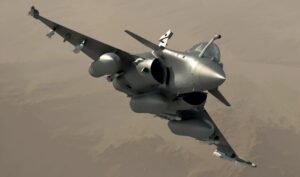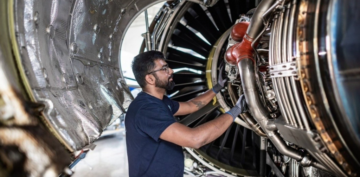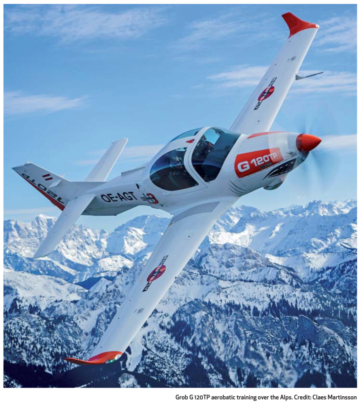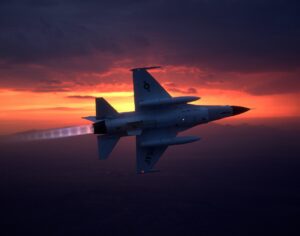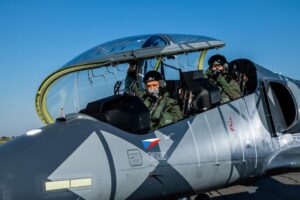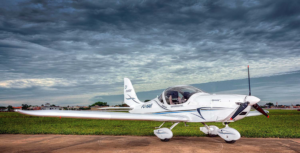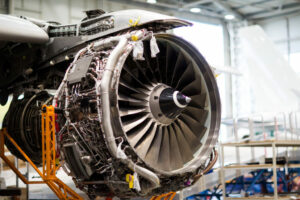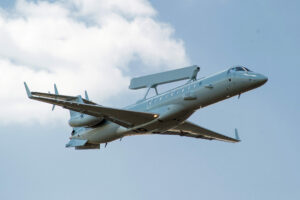A Deep Dive into the Tactical Prowess, Technological Agility, and Future Potential of Gripen, in Conversation with Former Test Pilot and Aeronautical Maven Jussi Halmetoja
In the high-octane arena of air defense, understanding the subtleties of tactical capabilities, and the strategic implications of choosing one aircraft over another, is paramount. In an era where the debate around the relevance and supremacy of 5th Generation aircraft is gaining momentum, it becomes critical to explore the broader spectrum of available solutions and assess them through an expert lens. This exclusive conversation with Jussi Halmetoja, a former Gripen Test Pilot and an authoritative figure in aeronautics, provides us an unparalleled opportunity to do just that.
We embark on a thorough exploration of the SAAB JAS 39 Gripen fighters, elucidating its unique strengths and unveiling its enduring potential as a potent defense solution for the Czech Republic. As Halmetoja asserts, “We stopped talking about ‘generations’ years ago because Gripen’s technology, and therefore capabilities, can be enhanced almost daily.” This encapsulates the ethos of our discourse, as we scrutinize the Gripen not just as an aircraft but as a dynamic, adaptive, and evolving defense system.
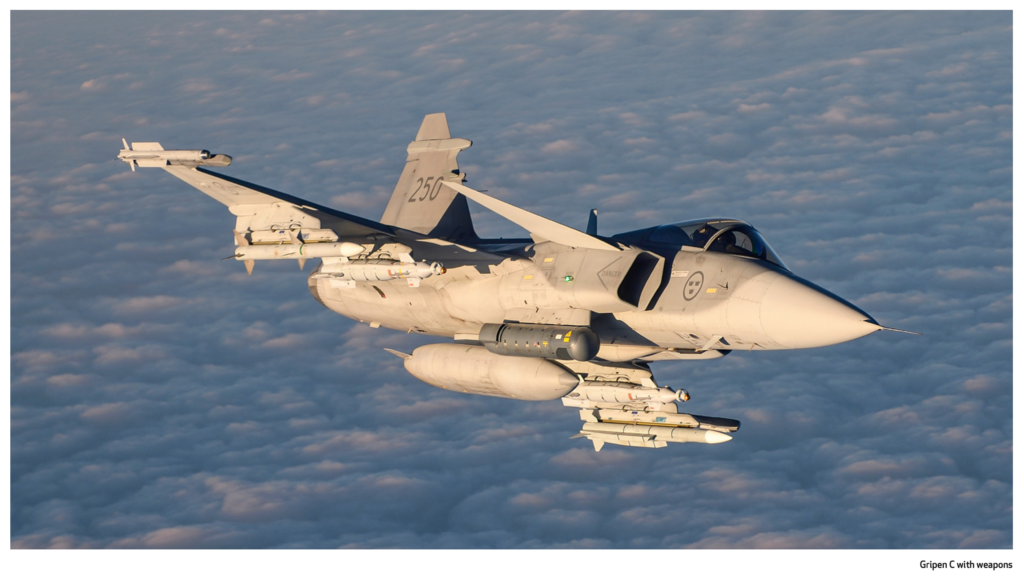
Throughout our dialogue, we take a deep dive into Halmetoja’s extensive experience, spanning over 24 years in the Swedish Air Force, and his intricate involvement with the Gripen’s development and testing. We dissect the Gripen’s operational capabilities against other 5th generation aircraft, revealing its distinctive approach towards survivability, which is its effective electronic warfare and a sophisticated electronic shield.
We also unravel the Gripen’s unparalleled interoperability with NATO forces, its short takeoff and landing distance, and its exceptional multi-role functionality, each contributing to its adaptability and suitability for the Czech Republic’s defense requirements.
As we commence this enlightening journey, we endeavor to illuminate the intricate dimensions of the Gripen’s operational and strategic prowess, and how it continues to hold its own in the rapidly evolving landscape of defense technology.
Could you briefly summarize your experience with the Gripen aircraft, and in particular, the C/D variants?
After serving my conscript military service in the Swedish Army Rangers, I joined the Swedish Air Force in 1995. Over a period of more than 24 years in the Air Force’s fighter division, I accumulated more than 2300 hours of military flying in over 20 different aircraft types, including most of the westernized fighters of today. The majority of my flight experience has been garnered from various roles and mission types on the Viggen and Gripen fighters. I was also heavily involved with the Gripen E program, particularly with defining the Swedish Air Force’s requirements for the capabilities of the Gripen.
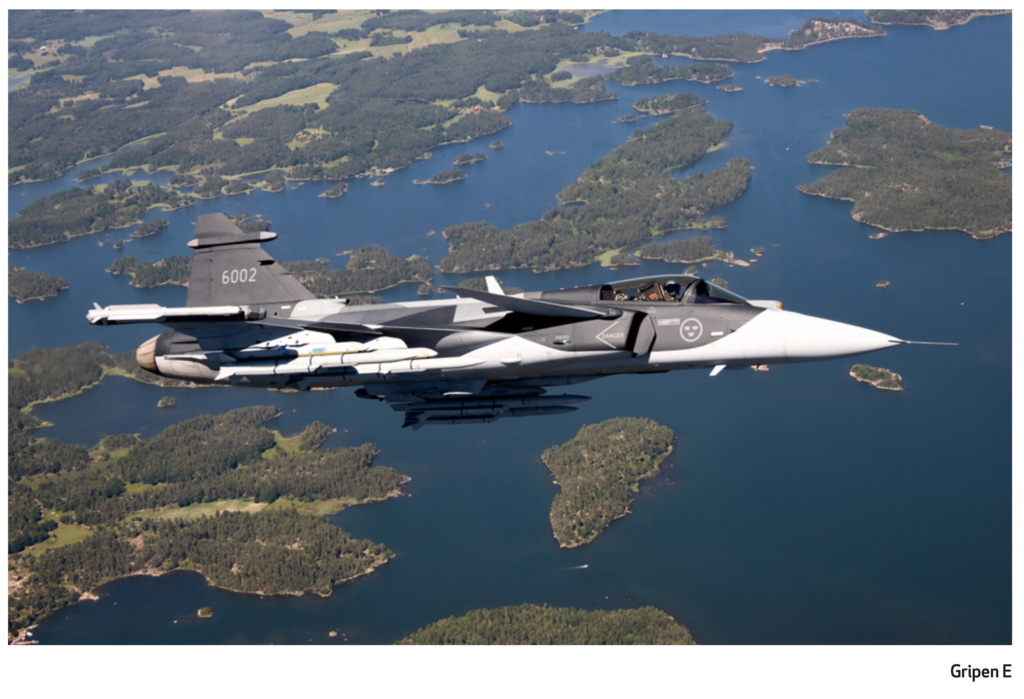
I served as a weapons instructor at the Gripen Operational Test & Evaluation Unit, where we were deeply involved in weapon and sensor integration during the deployment of the Gripen C/D in the Swedish Air Force. Every fighter needs its weaponry, and Gripen stands out for its unique capability to carry diverse weapons for all types of missions, sourced from the best suppliers worldwide. I view this as a significant advantage of the Gripen – the ability to select your weaponry, rather than being restricted to those produced by the country manufacturing the aircraft, which is typically the case with US competitors.
Given your vast experience with the Gripen, how would you say it stacks up against 5th generation aircraft in terms of operational capabilities?
At Saab, we stopped talking about “generations” years ago, because Gripen’s technology, and therefore capabilities, can be enhanced almost daily. The main difference between fourth- and fifth-generation aircraft such as the F-35 is the stealth feature, i.e. the difficulty of detection by radar. The Gripen approaches survivability differently, using effective electronic warfare to protect against electronic detection, creating an electronic shield protecting the fighter. We did not choose to go the stealth way, we decided to go the smart way. In fact, in some aspects, we do even better than our US competitors. Furthermore, when it comes to stealth itself, it is also a very expensive technology designed specifically for penetrating deep over enemy territory. It raises the question whether these are the kinds of missions that the Czech Air Force is planning to undertake?
The term ‘5th generation’ is frequently mentioned in the Czech media. How does Saab/Gripen interpret this concept? What are the key parameters defining a 5th generation aircraft, and how does the Gripen meet these?
Gripen is the first of a new breed to transcend the generation discussion. The aircraft’s design separates critical technological infrastructure, allowing for rapid upgrades not possible with other fighters. Fifth generation also includes data fusion and interconnectivity, nothing that Gripen fighters would not be capable of doing so. We should not overestimate the ability of ‘invisibility’ for radars. Stealth features are one way of ensuring survivability. But, if you look at today’s systems and sensors that have already been deployed and integrated by countries that we consider rivals today, like Russia and China, but also India, they include acoustic sensors, passive sensors, low-frequency radars that are designed to detect just aircraft with stealth characteristics. Not everyone has them, but these countries already have them.
The JAS 39C/D Gripen variants are renowned for their modernized cockpit and auxiliary power unit, among other enhancements. Could you elaborate on these features and how they augment operational efficiency?
The Gripen C/D features an advanced cockpit design with an optimized Human-Machine Interface, incorporating a full glass cockpit. This includes three large color Multi-Functional Displays and a unique, very wide-angle Head-Up Display. The cockpit is fully compatible with Night Vision Goggles. Further HMI enhancements, such as the use of a Helmet Mounted Display, provide the pilot with an ideal system for high off-boresight engagements. The Gripen C also includes a fully integrated Ground Collision Avoidance System (AUTO-GCAS).

To address your question from a different perspective, I would also like to discuss operational availability. This is particularly crucial for smaller air forces like the Czech Air Force – it is essential that aircraft are readily available for missions and can take off at a moment’s notice. By design, the Gripen is the most available fighter aircraft in the world. Its high levels of availability and maintainability are key components that allow the Gripen to project force. Gripen availability usually hovers above 80%, but during missions, it can even exceed 90%. In comparison, the availability of the F-35 is around 50%, which could present serious issues for the Czech Air Force.
The aircraft itself is straightforward to fly, but today’s challenge lies in data acquisition and evaluation. Comparing the Gripen C, F-16, or F-18 to the Gripen E in terms of tactics, the latter is equipped with a whole new set of active and passive sensors that operate automatically, thereby easing the pilot’s workload. The cockpit is dominated by a new, wider display where the pilot can receive information and maintain situational awareness at all times, making a significant difference.
The Gripen E boasts electronic equipment comparable to the F-35, whose pilots commend the fusion of sensors. Data from all sensors combine to provide a comprehensive picture of the aircraft’s surroundings, and thanks to the Digital Aperture System (DAS), the pilot has 360-degree awareness of the environment.
The JAS 39C Gripen was developed with specifications in line with those of NATO countries. Could you discuss the advantages this provides in terms of interoperability with other NATO forces?
The Gripen is fully NATO-proven, completely networked, and capable of fulfilling any NATO mission. This is something that the Czech Air Force (CzAF) demonstrated during its seven NATO missions, whether in the Baltics or Iceland. The Swedish Air Force also participates in numerous missions alongside NATO members. Essentially, the Gripen is fully interoperable with any modern army, navy, and command and control systems. Furthermore, it’s important to recognize, as many within NATO already do, that fleet diversification in Europe is only beneficial to NATO as a whole. European air forces should not rely solely on one type of aircraft.
How does the Gripen’s short takeoff and landing distance contribute to its operational flexibility, especially considering the geographical and infrastructural realities of the Czech Republic?
I would like to answer this question with the following quote:
“The ability to disperse aircraft is a specialty of theirs. Sweden has agile combat employment (ACE) down better than any other air force in the world, and we are going to exploit that”.
- USAFE commander General James Hecker, August 2022
Evidently, air bases are primary targets in any conflict and are often among the first to be neutralized. However, we don’t need to consider only conflict situations. For instance, imagine a situation where the CzAF can only operate F-35s from Čáslav AFB. What will you do during periods of regular runway maintenance, for example? Will you leave your airspace unprotected?
The philosophy behind Gripen is entirely different. It is optimized for high-tempo operations, even in the extreme and harsh conditions typical of Nordic countries. It boasts an unrivaled air-to-air combat turnaround time that can be performed within 10 minutes by only three technicians. Furthermore, Gripen’s short takeoff and landing capabilities make it possible for the aircraft to land on a standard road, eliminating the need for FOD (Foreign Object Damage) sweeping.
Could you comment on the Gripen’s multi-role functionality and how this versatility contributes to its suitability for the Czech Republic’s defense requirements?
The Czech Air Force is highly capable, and I am always impressed with the skill and proficiency demonstrated by the men and women operating it, particularly given that they do so with just 14 Gripens. Last year, when the CzAF was deployed in the Baltics to protect NATO’s Eastern Flank while simultaneously defending Czech airspace and even the airspace of Slovakia (as they awaited the delivery of their delayed F-16 fighters) – I can only say, that’s a unique capability!
Air superiority is the single most important factor in deciding the outcome of a war. Military operations on land, sea (although perhaps not as pertinent for the Czech Republic), or in the air are all dependent on owning the sky. The Gripen has it all – it’s the quickest to react, offers an informational advantage, continuous technological advantage, and access to all advanced weaponry, including the game-changing Meteor missiles, with the largest no-escape zones. There’s no need to purchase an aircraft initially designed as a bomber for deep enemy territory strikes to fulfill the Czech Republic’s defense requirements.
Given the current debate around potential F-35 purchases, what are the compelling arguments for the Czech Republic to continue its commitment to the Gripen platform?
More than seventeen years of successful Gripen operation, with over 35,000 flight hours, are compelling proof of the platform’s reliability. And yet, there are still many operational years and hours left in the system. The Czech Air Force has been constructed around the Gripen fighter system, which is the cornerstone of Czech air defense. The capability that Gripen brings to the Czech Air Force is widely recognized, and as a result, the CzAF is considered a highly valued contributor within NATO, especially in the protection of sovereign airspaces on its Eastern Flank.
Both the infrastructure and personnel within the Czech Air Force are already optimized for the Gripen system, and significant synergies could be achieved by continuing to use the Gripen platform and expanding the current fleet with additional Gripen fighters. This applies whether the fleet expansion involves Gripen C/D or Gripen E.
At this point, more than 50% of the lifespan of the Gripen C/D platforms remains, and the potential for significant capability enhancements is still strong. There is no logic in discarding one of the most mature and capable fighter systems in operation today. With the Gripen, there would be no need to spend $42,000 per flight hour, invest $650 million into reconstructing the Čáslav AFB, depend solely on one air base, or face serious issues such as those the F-35 platform has with overheating engines.
Lastly, it’s worth considering whether leaving a long-term partner, one that continually creates new opportunities for the Czech industry, and switching at a high cost to a platform where domestic industry involvement is challenging, if not impossible, truly constitutes the most efficient decision for the Czech Republic.
Finally, could you share some of your most memorable experiences as a Gripen Test Pilot and how those experiences shape your perspective on the Gripen’s role in the future of air defense?
Saying all of the above – what can say but that Gripen is the best choice for the Czech Republic! And me personally, I love to fly it!
As we conclude this insightful interview, we’d like to extend our heartfelt gratitude to Jussi for sharing his invaluable expertise and experience. Remember, if the sky is the limit, then Gripen seems to have found a comfortable home beyond those frontiers.
Key Features and Advantages of the Gripen Aircraft
| Feature | Description |
|---|---|
| Operational Compatibility with NATO | As a member of NATO, the Czech Republic requires aircraft compatible with other NATO forces. Gripen’s compliance with NATO standards ensures this interoperability. |
| Multi-role Functionality | The Gripen is capable of undertaking air-to-air, air-to-ground, and reconnaissance missions in a single sortie, providing excellent value for money and operational flexibility. |
| Modernization and Upgrade Potential | The rapidly evolving air defense landscape necessitates continual modernization and upgrading. Gripen E’s technology enables frequent enhancement of its capabilities, ensuring continuous readiness. |
| Cost-effectiveness | The Gripen’s cost-effectiveness, considering acquisition, operation, and maintenance costs, is a compelling consideration for budget-conscious governments. |
| Short Takeoff and Landing Capabilities | The Gripen’s ability to take off and land on short airstrips allows operation from a range of airbases, including those with minimal infrastructure. This improves operational flexibility and responsiveness. |
| Technical Capabilities | The Gripen C/D’s advanced features such as a modernized cockpit, auxiliary power unit, and oxygen generator significantly enhance operational efficiency. |
| Familiarity and Existing Infrastructure | The Czech Air Force’s familiarity with the Gripen saves significant cost and time. Pre-existing facilities and reduced personnel requirements add to the cost-effectiveness. |
| NATO Mission Participation and Regional Security | Operating the Gripen enables the Czech Air Force to participate in all NATO missions and regularly protect the airspace of other Alliance partners, contributing to regional security. |
| Reliability and Performance | The Gripen’s proven reliability and strong performance record offer a distinct advantage over newer, less proven aircraft. |
Interviewed and edited by: Katerina Urbanova, EIC @ ACE
Photo credit: Saab
- SEO Powered Content & PR Distribution. Get Amplified Today.
- PlatoData.Network Vertical Generative Ai. Empower Yourself. Access Here.
- PlatoAiStream. Web3 Intelligence. Knowledge Amplified. Access Here.
- PlatoESG. Automotive / EVs, Carbon, CleanTech, Energy, Environment, Solar, Waste Management. Access Here.
- BlockOffsets. Modernizing Environmental Offset Ownership. Access Here.
- Source: https://aero-space.eu/2023/07/18/gripen-vs-5th-generation-balancing-performance-and-availability-for-czech-defense/
- :has
- :is
- :not
- :where
- $UP
- 000
- 1
- 10
- 14
- 20
- 24
- 27
- 360-degree
- 39
- 40
- 5th
- 5th generation
- 7
- a
- ability
- About
- above
- access
- Accumulated
- achieved
- acquisition
- active
- add
- Additional
- address
- advanced
- ADvantage
- advantages
- Aeronautics
- against
- agile
- ago
- AIR
- Air Force
- air-to-air
- aircraft
- airspace
- All
- Alliance
- allow
- Allowing
- allows
- alongside
- already
- also
- Although
- always
- am
- among
- an
- and
- Another
- answer
- any
- approach
- approaches
- ARE
- Arena
- arguments
- Army
- around
- AS
- aspects
- assess
- At
- AUGUST
- automatically
- availability
- available
- awareness
- balancing
- Baltics
- base
- BE
- because
- becomes
- been
- behind
- being
- beneficial
- BEST
- Better
- between
- Beyond
- boasts
- BREED
- briefly
- Brings
- broader
- but
- by
- CAN
- capabilities
- capability
- capable
- carry
- case
- challenge
- challenging
- characteristics
- China
- choice
- Choose
- choosing
- Cockpit
- color
- combat
- combine
- comes
- comfortable
- comment
- commitment
- comparable
- comparing
- comparison
- compatibility
- compatible
- compelling
- competitors
- completely
- compliance
- components
- comprehensive
- concept
- conclude
- conditions
- conflict
- Consider
- consideration
- considered
- considering
- continually
- continue
- continues
- continuing
- continuous
- contribute
- contributes
- contributing
- contributor
- control
- Conversation
- cornerstone
- Cost
- Costs
- could
- countries
- country
- creates
- Creating
- credit
- critical
- crucial
- Current
- Czech
- czech republic
- daily
- damage
- data
- debate
- decided
- Deciding
- decision
- deep
- deep dive
- Defending
- Defense
- defining
- Delayed
- delivery
- demonstrated
- dependent
- deployed
- deployment
- Design
- designed
- Detection
- developed
- Development
- dialogue
- DID
- difference
- different
- Difficulty
- digital
- dimensions
- discuss
- discussion
- Display
- displays
- distance
- distinct
- distinctive
- diverse
- diversification
- Division
- do
- does
- doing
- Domestic
- Dont
- down
- during
- dynamic
- e
- each
- easing
- eastern
- Effective
- efficiency
- efficient
- Elaborate
- Electronic
- eliminating
- embark
- employment
- enables
- endeavor
- enduring
- engagements
- Engines
- enhance
- enhanced
- enhancement
- enhancements
- ensures
- ensuring
- entirely
- Environment
- equipment
- equipped
- Era
- especially
- essential
- essentially
- Ether (ETH)
- Ethos
- Europe
- European
- evaluation
- Even
- Every
- everyone
- evolving
- example
- exceed
- excellent
- exceptional
- Exclusive
- Exclusive Conversation
- existing
- expanding
- expansion
- expensive
- experience
- Experiences
- expert
- expertise
- Exploit
- exploration
- explore
- extend
- extensive
- Extensive Experience
- extreme
- Face
- facilities
- fact
- factor
- Familiarity
- Feature
- Features
- fifth
- fighters
- Figure
- First
- FLEET
- Flexibility
- flight
- flying
- following
- For
- Force
- Forces
- foreign
- Former
- found
- frequent
- frequently
- from
- Frontiers
- Fulfill
- fulfilling
- full
- fully
- functionality
- further
- Furthermore
- fusion
- future
- gaining
- General
- generation
- generator
- geographical
- given
- glass
- Go
- going
- Governments
- gratitude
- Ground
- Have
- heavily
- High
- highly
- his
- HMI
- hold
- Home
- hour
- HOURS
- How
- However
- HTTPS
- i
- Iceland
- ideal
- if
- illuminate
- imagine
- implications
- important
- impossible
- impressed
- improves
- in
- include
- includes
- Including
- incorporating
- india
- industry
- information
- Informational
- infrastructural
- Infrastructure
- initially
- insightful
- instance
- integrated
- integration
- Interface
- Interoperability
- interoperable
- Interview
- into
- invaluable
- Invest
- involved
- involvement
- issues
- IT
- ITS
- itself
- james
- joined
- journey
- just
- Key
- Land
- landing
- landscape
- large
- largest
- Last
- Last Year
- Leave
- leaving
- left
- Lens
- less
- levels
- lies
- lifespan
- like
- LIMIT
- Line
- logic
- long-term
- Look
- love
- Main
- maintain
- maintenance
- Majority
- make
- Making
- manufacturing
- many
- mature
- Maven
- max-width
- me
- Media
- Meet
- member
- Members
- memorable
- Men
- mentioned
- Military
- million
- minimal
- minutes
- missiles
- Mission
- missions
- Modern
- modernization
- Momentum
- money
- more
- most
- my
- Need
- needs
- New
- night
- no
- nothing
- Notice..
- numerous
- object
- of
- off
- offer
- Offers
- often
- on
- ONE
- only
- operate
- operating
- operation
- operational
- Operations
- opportunities
- Opportunity
- optimized
- or
- Other
- our
- out
- Outcome
- over
- own
- Oxygen
- parameters
- Paramount
- participate
- participates
- participation
- particular
- particularly
- partner
- partners
- passive
- per
- performance
- performed
- perhaps
- period
- periods
- Personally
- Personnel
- perspective
- philosophy
- picture
- pilot
- Pilots
- planning
- platform
- Platforms
- plato
- Plato Data Intelligence
- PlatoData
- Point
- possible
- potential
- power
- present
- primary
- Produced
- Program
- project
- proof
- protect
- protecting
- protection
- proven
- provide
- provides
- providing
- prowess
- purchase
- purchases
- question
- quickest
- quote
- radar
- raises
- range
- rapid
- rapidly
- rather
- React
- Readiness
- realities
- receive
- recognize
- recognized
- record
- Reduced
- regional
- regular
- regularly
- relevance
- reliability
- rely
- remains
- remember
- Renowned
- Republic
- Requirements
- requires
- restricted
- result
- revealing
- rivals
- road
- Role
- roles
- runway
- Russia
- say
- SEA
- security
- seems
- sensors
- serious
- service
- serving
- set
- seven
- Shape
- Share
- sharing
- Shield
- Short
- should
- significant
- significantly
- simultaneously
- single
- situation
- situations
- skill
- sky
- smaller
- smart
- So
- solely
- solution
- Solutions
- some
- something
- sophisticated
- sourced
- sovereign
- Specialty
- specifically
- specifications
- Spectrum
- spend
- Stacks
- standard
- standards
- stands
- Stealth
- Still
- stopped
- straightforward
- Strategic
- strengths
- Strikes
- strong
- successful
- such
- suitability
- summarize
- suppliers
- Sweden
- Swedish
- system
- Systems
- tactical
- tactics
- Take
- talking
- targets
- technological
- Technology
- term
- terms
- territory
- test
- Testing
- than
- thanks
- that
- The
- The Future
- the world
- their
- Them
- then
- There.
- thereby
- therefore
- These
- they
- this
- those
- three
- Through
- time
- times
- to
- today
- today’s
- towards
- truly
- type
- types
- typical
- typically
- understanding
- undertake
- unique
- unit
- unparalleled
- unravel
- unrivaled
- unveiling
- upgrade
- upgrades
- us
- use
- using
- usually
- value
- valued
- various
- Vast
- versatility
- very
- View
- vision
- vs
- war
- was
- Way..
- we
- Weapons
- were
- What
- when
- whether
- which
- while
- whole
- whose
- widely
- wider
- will
- with
- within
- Women
- world
- worldwide
- worth
- would
- year
- years
- yet
- you
- Your
- zephyrnet
- zones

